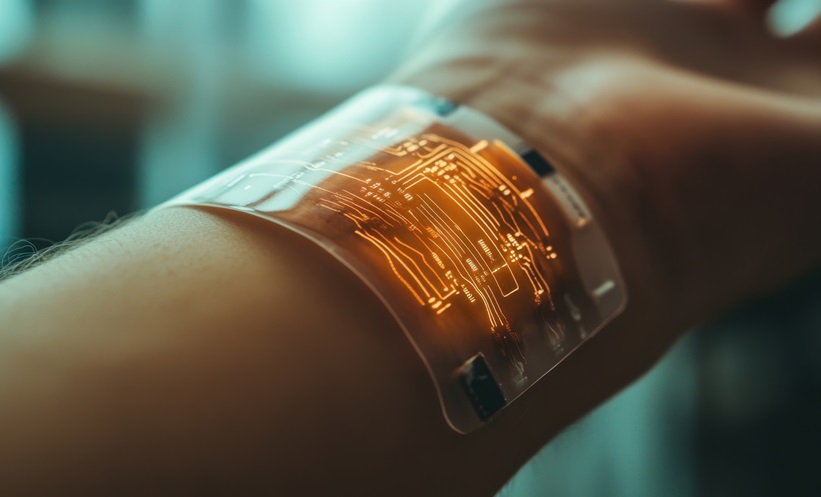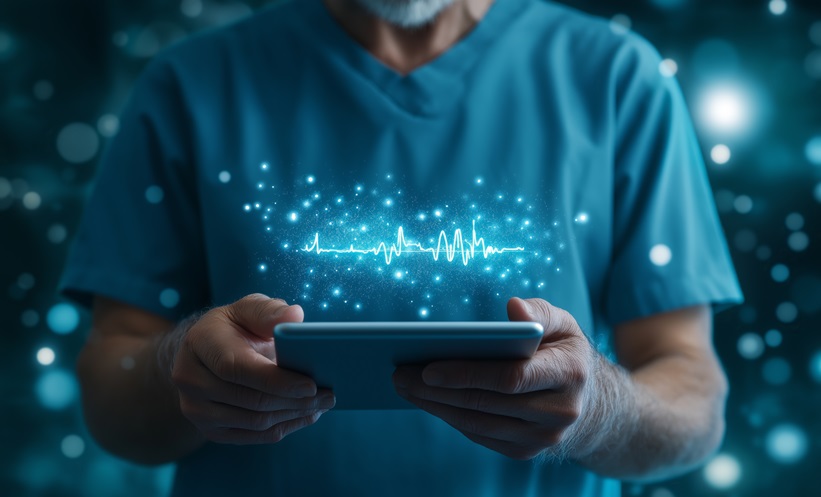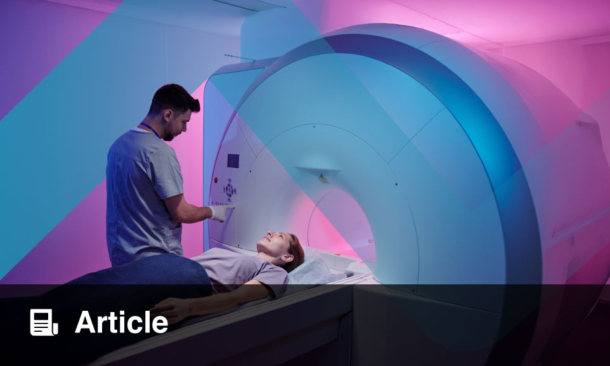A NEWLY developed electronic skin (E-Skin) can rapidly self-heal within 10 seconds, maintaining over 80% functionality after mechanical damage, enabling real-time physiological and movement monitoring in extreme conditions.
Electronic skins (E-Skins) are emerging as a breakthrough in wearable health technology, allowing continuous, real-time monitoring of physiological and movement-related data. However, mechanical damage from daily wear compromises their long-term effectiveness, limiting their clinical and commercial viability. To address this, researchers have developed a self-healing E-Skin that recovers from scratches and tears within 10 seconds, significantly outperforming existing materials. This advance removes a major barrier to commercialisation, enhancing the durability and reliability of wearable biometric monitoring systems.
The E-Skin was designed using a PTMEG-modified TPU matrix infused with bis(4-hydroxyphenyl) disulfide, enabling rapid self-healing through disulfide bond exchange. A silver nanowire network ensured a soft, stretchable interface that maintained stable electrophysiological measurements despite mechanical damage. Importantly, the E-Skin demonstrated exceptional environmental resilience, functioning underwater and across a broad temperature range. In AI-assisted muscle strength analytics and fatigue detection, it achieved an accuracy of over 95%, confirming its potential for precise health assessment. The material’s ability to self-repair without external stimuli enhances its practicality for real-life applications, from sports and rehabilitation to occupational health monitoring.
For clinical practice, this self-healing E-Skin represents a significant step towards more robust and long-lasting wearable health devices. Future research will focus on optimising electrode materials, extending operational duration for long-term monitoring, and integrating miniaturised electronics for wireless signal processing. Large-scale validation studies are also needed to ensure reliability across diverse populations. With further advancements, this technology could transform personalised healthcare, injury prevention, and rehabilitation, particularly benefiting athletes, military personnel, and workers in physically demanding roles.
Katrina Thornber, EMJ
Reference
Lee Y et al. Rapidly self-healing electronic skin for machine learning–assisted physiological and movement evaluation. Sci. Adv. 2025;11Leads1301.








